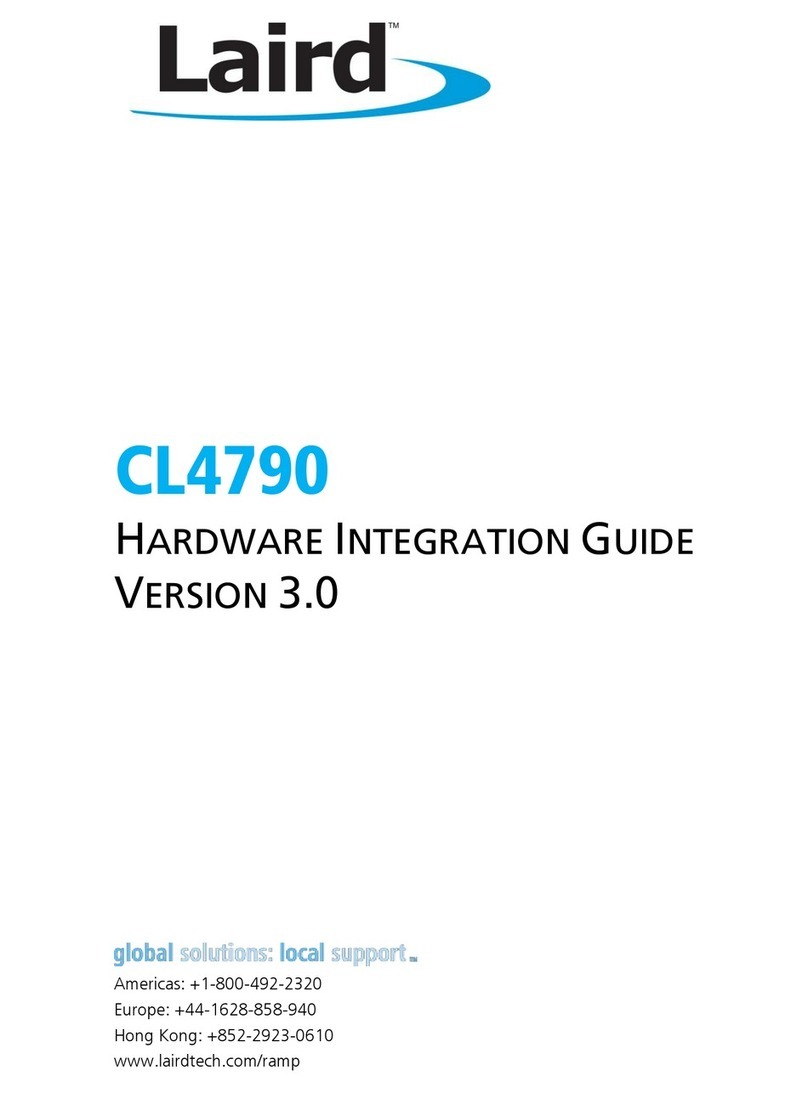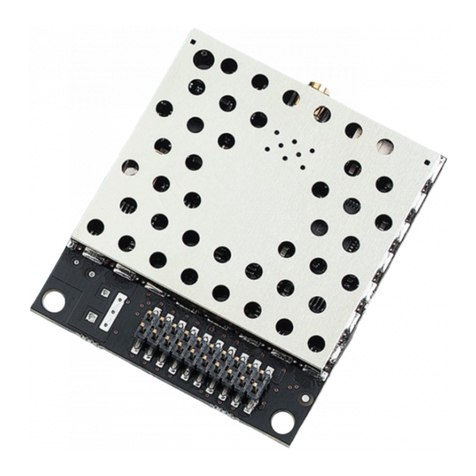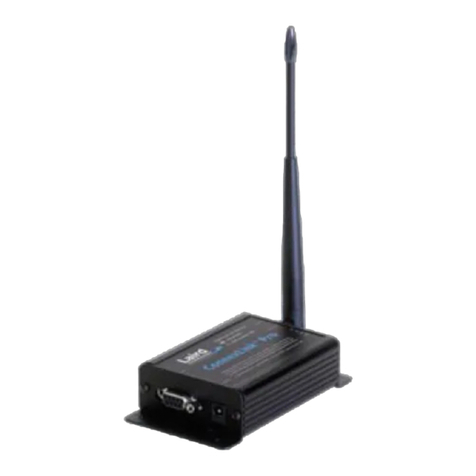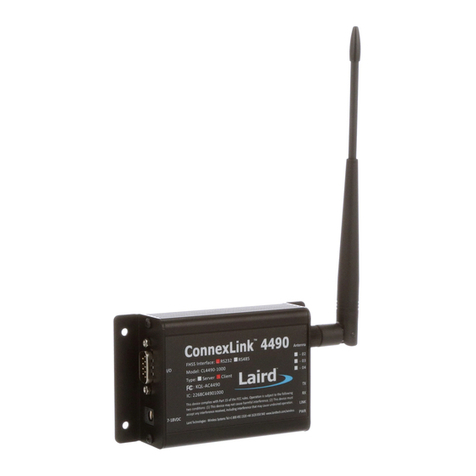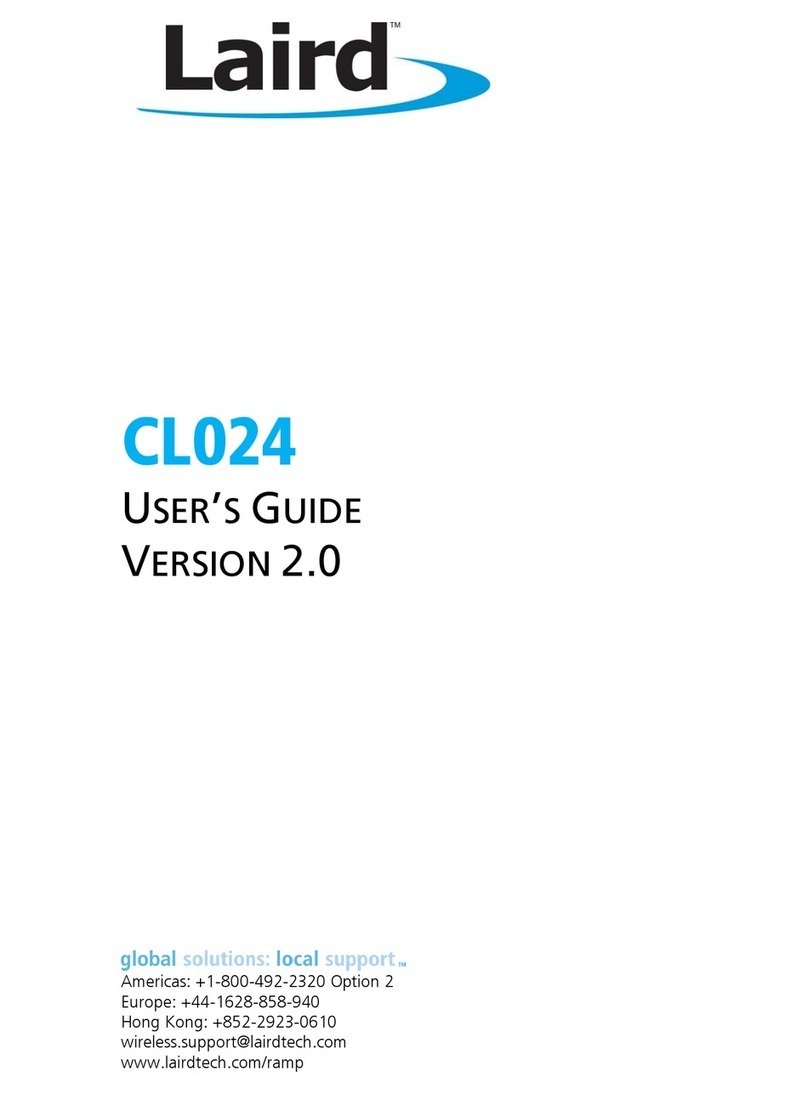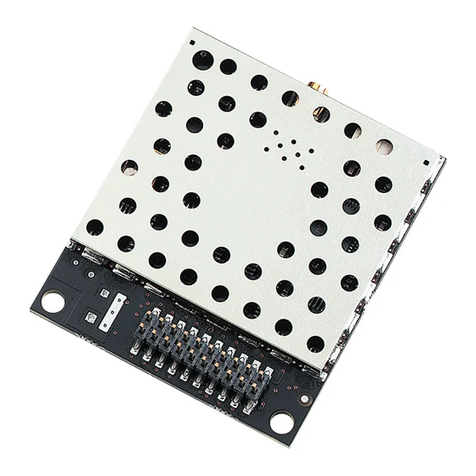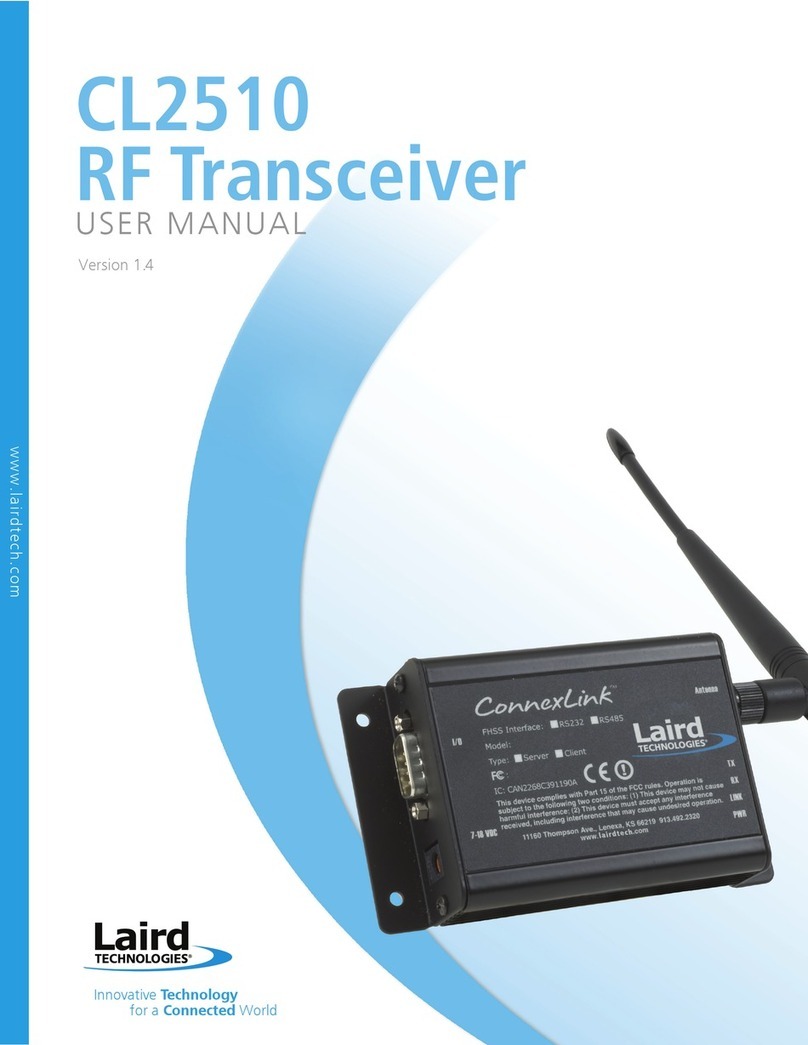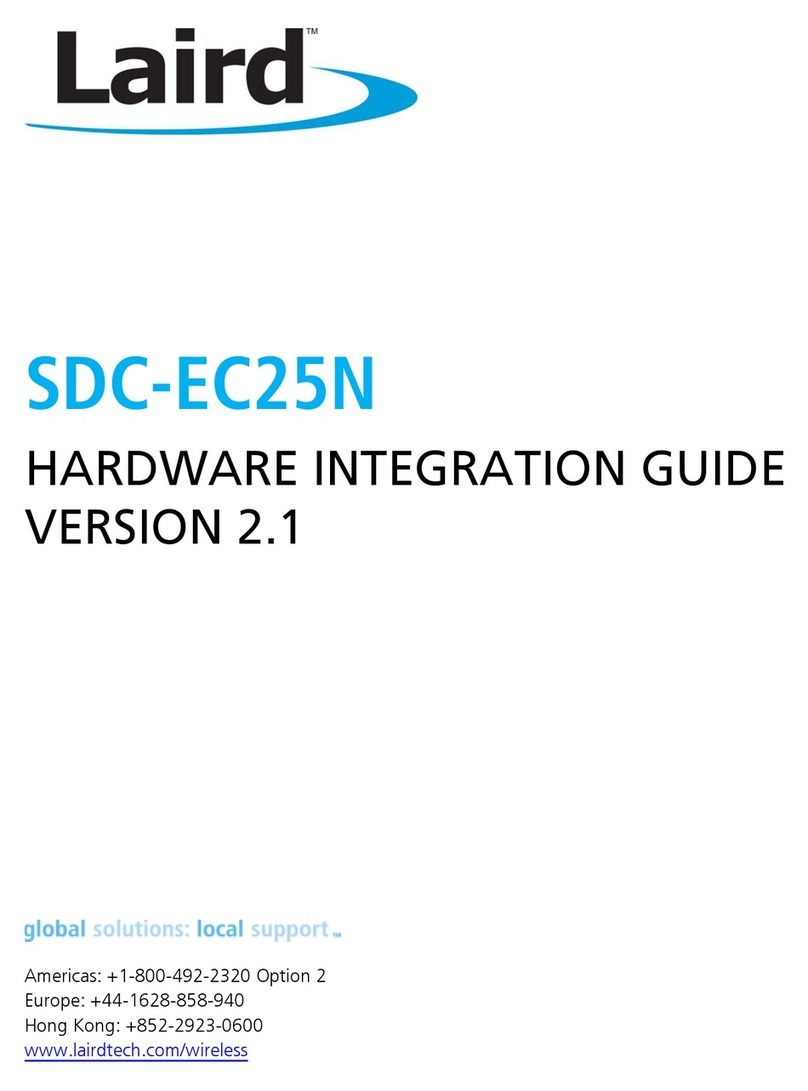
AC4868 868 MHz Transceiver
User’s Manual
Americas: +1-800-492-2320 Option 3 3 Laird Technologies
Europe: +44-1628-858-940
Hong Kong: +852 2923 0610
www.lairdtech.com/ramp
CONTENTS
Revision History............................................................................................................................................ 1
Overview....................................................................................................................................................... 5
Features ........................................................................................................................................................ 5
Networking and Security........................................................................................................................ 5
Easy to Use ............................................................................................................................................ 5
Specifications ............................................................................................................................................... 6
Module Specifications ................................................................................................................................ 6
Electrical Specifications............................................................................................................................... 7
Pin Definitions............................................................................................................................................ 7
Theory of Operation.................................................................................................................................... 9
RF Architecture........................................................................................................................................... 9
Modes of Operation................................................................................................................................... 9
Transmit Mode ...................................................................................................................................... 9
Receive Mode ........................................................................................................................................ 9
Command Mode ................................................................................................................................... 9
Duty Cycle Limitations ............................................................................................................................... 11
European Regulations .............................................................................................................................. 11
Radio Operation....................................................................................................................................... 11
Transmit Calculations........................................................................................................................... 11
Serial Interface ........................................................................................................................................... 12
Serial Communications............................................................................................................................. 12
Asynchronous Operation ..................................................................................................................... 12
Parity ................................................................................................................................................... 12
OEM Host Data Rate ................................................................................................................................ 13
Serial Interface Baud Rate......................................................................................................................... 13
Interface Timeout / RF Packet Size ............................................................................................................ 13
Flow Control ............................................................................................................................................ 14
Half Duplex / Full Duplex .......................................................................................................................... 14
System Timing and Latency ...................................................................................................................... 15
System Throughput.................................................................................................................................. 15
Software Interface ..................................................................................................................................... 16
Networking .............................................................................................................................................. 16
Range Refresh.......................................................................................................................................... 16
Auto Config Parameters........................................................................................................................... 16
Max Power............................................................................................................................................... 17
Timing Diagrams........................................................................................................................................ 18
AC 4868-250 Timing Diagrams................................................................................................................ 18
Hardware Interface.................................................................................................................................... 20
Pin Definitions.......................................................................................................................................... 20
Generic I/O .......................................................................................................................................... 20
TXD and RXD....................................................................................................................................... 20
Hop Frame........................................................................................................................................... 20
CTS...................................................................................................................................................... 20
GND .................................................................................................................................................... 20
RTS ...................................................................................................................................................... 20
Test / 9600 Baud.................................................................................................................................. 21
UP_Reset ............................................................................................................................................. 21
Command / Data ................................................................................................................................. 21
AD In and DA Out................................................................................................................................ 21
In Range .............................................................................................................................................. 21
Configuring the AC4868-250 .................................................................................................................... 22
AT Commands ......................................................................................................................................... 22
